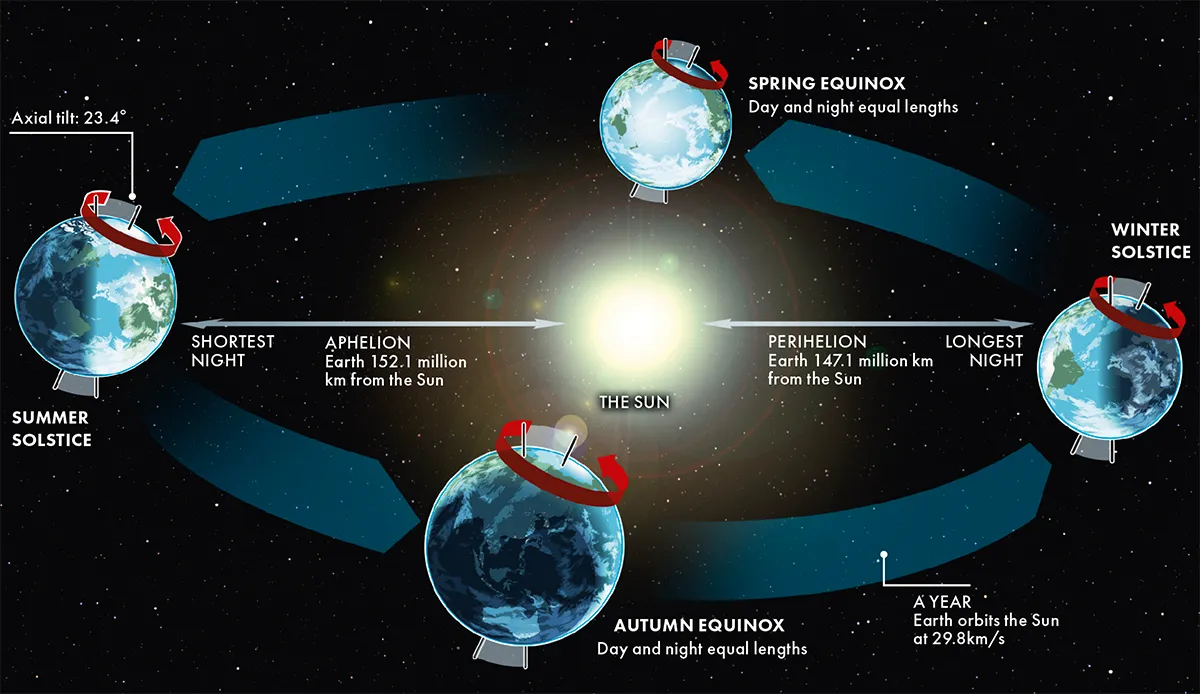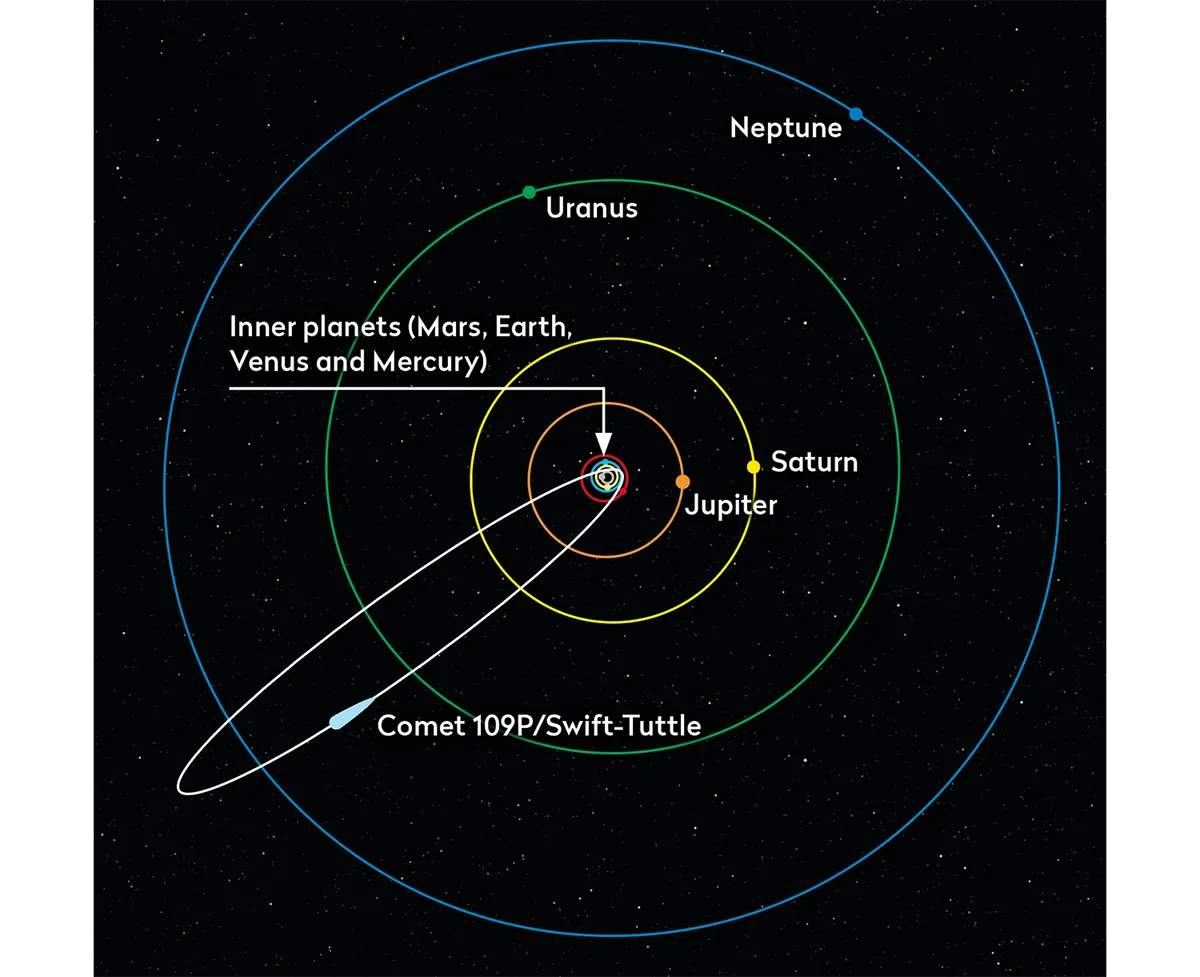The orbits of objects in space depend on gravity, mass, velocity and distance, and orbital eccentricity is used to describe the shape of an orbit relative to a perfect circle.
If a planet's mass, velocity and distance from its parent body matches the gravitational influence of that body, then the orbit would be a perfect circle.
Yet even in that case, the gravitational influence of other objects in the system would distort the orbit over time.
This creates the more usual elliptical orbits we see in our Solar system and beyond.
In this guide we'll look at orbital eccentricity and how circular (or not) are the orbits of the worlds of our Solar System.
Circles, ellipses and eccentricity

Johannes Kepler's first law tells us that planets orbit in an ellipse with the Sun at one of the two focal points (foci).
An ellipse is just a squashed circle with two foci with one longer, or major axis and one shorter or minor axis.
Eccentricity is how squashed the circle is and is measured by dividing the distance between the foci by the length of the major axis.

In a perfect circle, the axes are equal in length and the distance between the foci equals zero, so a circle has an eccentricity of 0.
An ellipse is a closed orbit with an eccentricity between 0 and 0.99.
An eccentricity of 1 is a parabolic or escape orbit. Anything over 1 is a hyperbolic orbit, which is open to infinity.
Most planets in our Solar System have a fairly low orbital eccentricity.
This may be due to the high number of bodies it contains, including the asteroids, Kuiper Belt and Oort Cloud.
Mercury is the planet with the highest and Venus has the lowest eccentricity.
Orbital eccentricity of Solar System planets
| Solar System body | Orbital eccentricity |
|---|---|
| Mercury | 0.205 |
| Venus | 0.006 |
| Earth | 0.016 |
| Mars | 0.093 |
| Jupiter | 0.048 |
| Saturn | 0.054 |
| Uranus | 0.047 |
| Neptune | 0.008 |
| Pluto | 0.248 |
| The Moon | 0.059 |
Our Moon has the greatest eccentricity of any large moon at 0.059.
Neptune's largest moon Triton holds the record for the least eccentric orbit of 0.00002.
Its retrograde orbit may subject to drag caused by a debris disc surrounding Neptune with a prograde orbit.
Dwarf planet Sedna has the largest eccentricity of 0.849, the cause of which is hotly debated but may point to evidence of a planet beyond Neptune.
Earth's orbital eccentricity

Earth's orbital eccentricity is due not only to our distance from the Sun but also the gravitational pull of Jupiter and Saturn.
It is the reason Earth's seasons are not of equal length. In the Northern Hemisphere summer is about 4.5 days longer than winter and spring is 3 days longer than autumn.
About 23% more solar radiation reaches Earth around 3 January when we are closest to the Sun than on 4 July, when we are furthest from it.
Yet Earth's orbital eccentricity is decreasing as part of a 100,000 year cycle.
Comets' orbits

Comets have very varied orbits. Most periodic comets have eccentricities between 0.2 and 0.7, though some have highly eccentric orbits, like Halley's Comet which has an eccentricity of 0.967.
Non-periodic comets have near parabolic orbits, like Comet Hale-Bopp's at 0.995. Comet C/2006 PI McNaught has a hyperbolic orbit of 1.00001 but, still being under the influence of the Sun, returns every 100,000 years.
Comet 2I/Borisov, discovered in 2019, is not bound to the Sun and has a hyperbolic orbit with an eccentricity of 3.36.
Most eccentric orbit
Most exoplanets have higher orbital eccentricities than those in our Solar System with HD20782b discovered by radial velocity in the Fornax constellation having the most eccentric orbit at 0.956.

